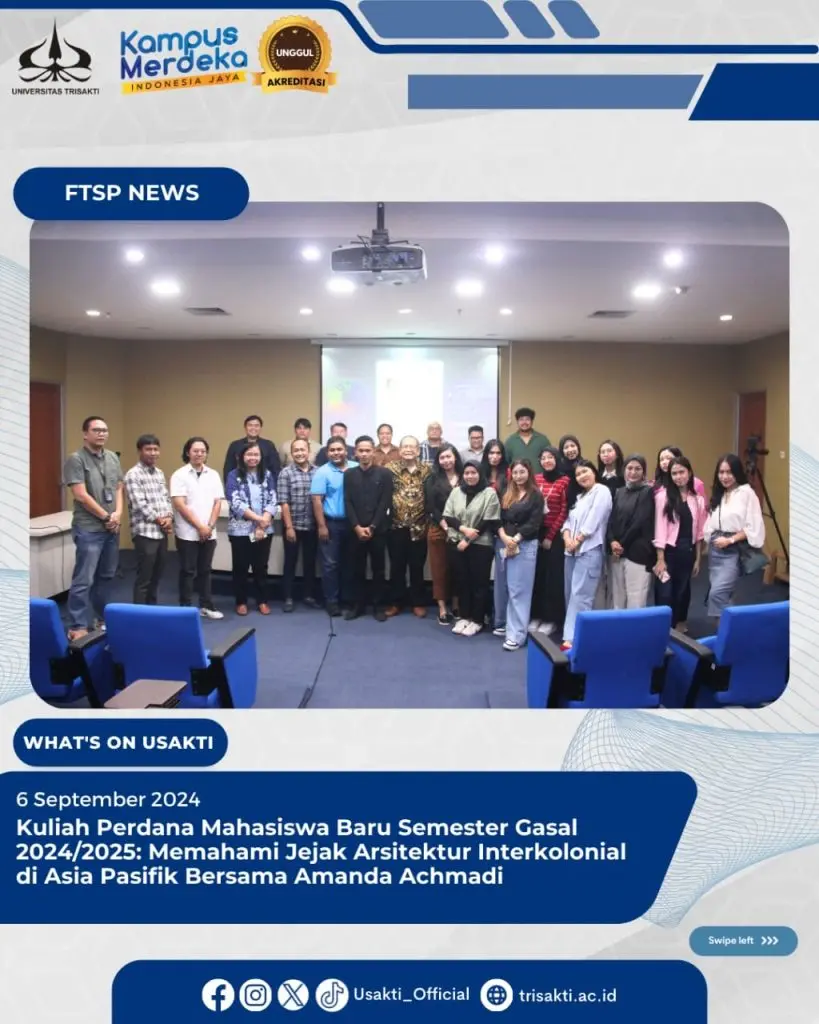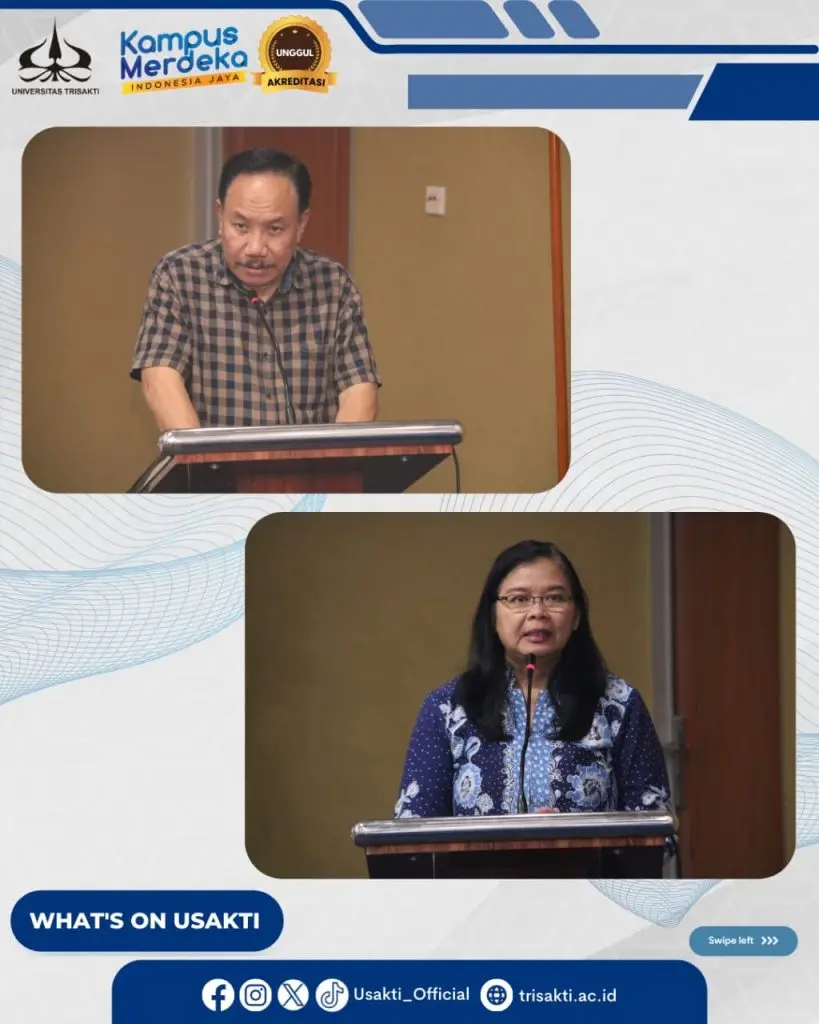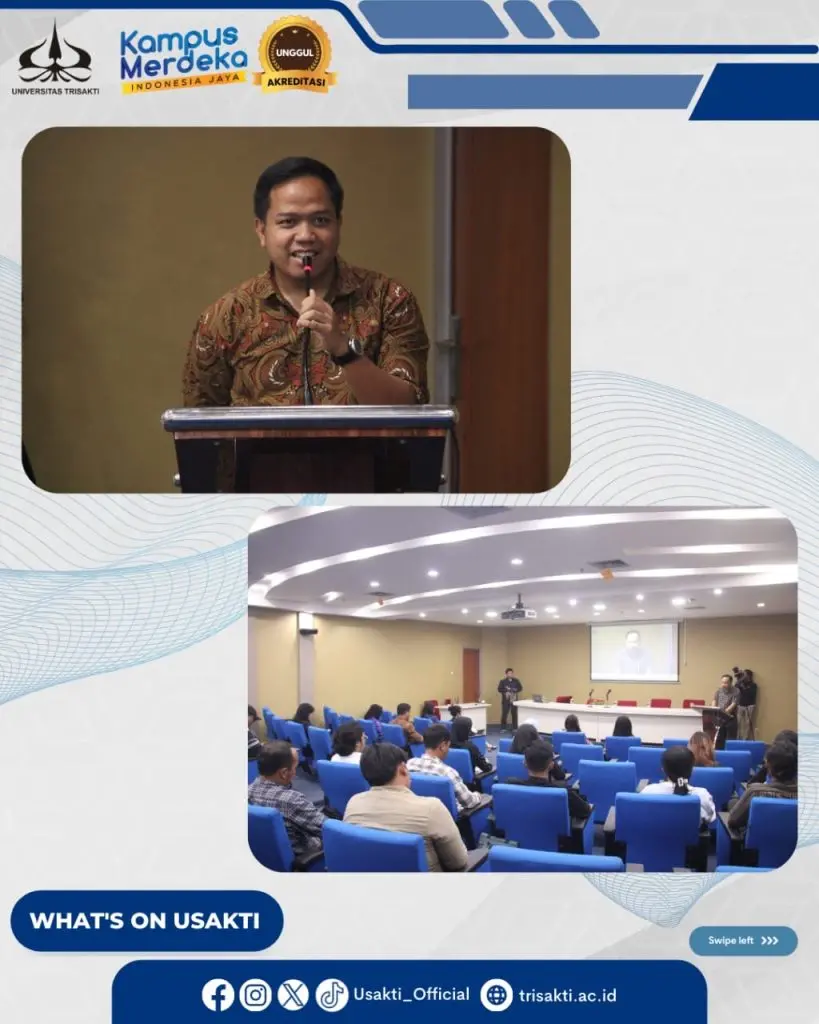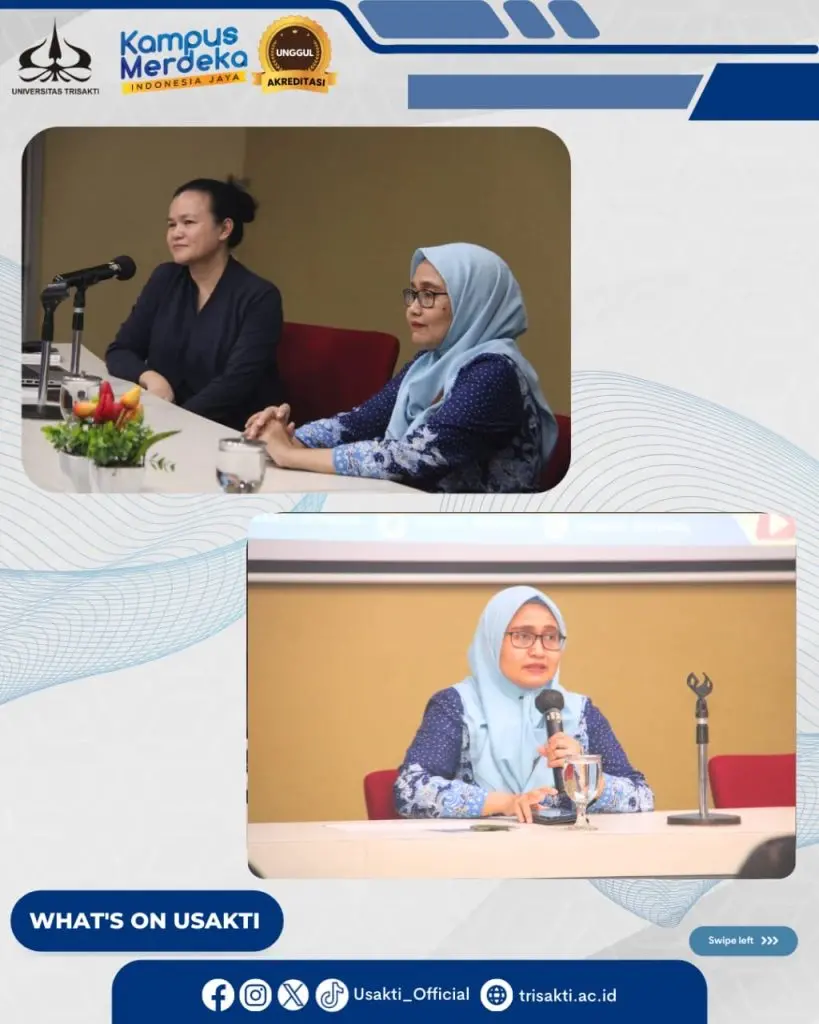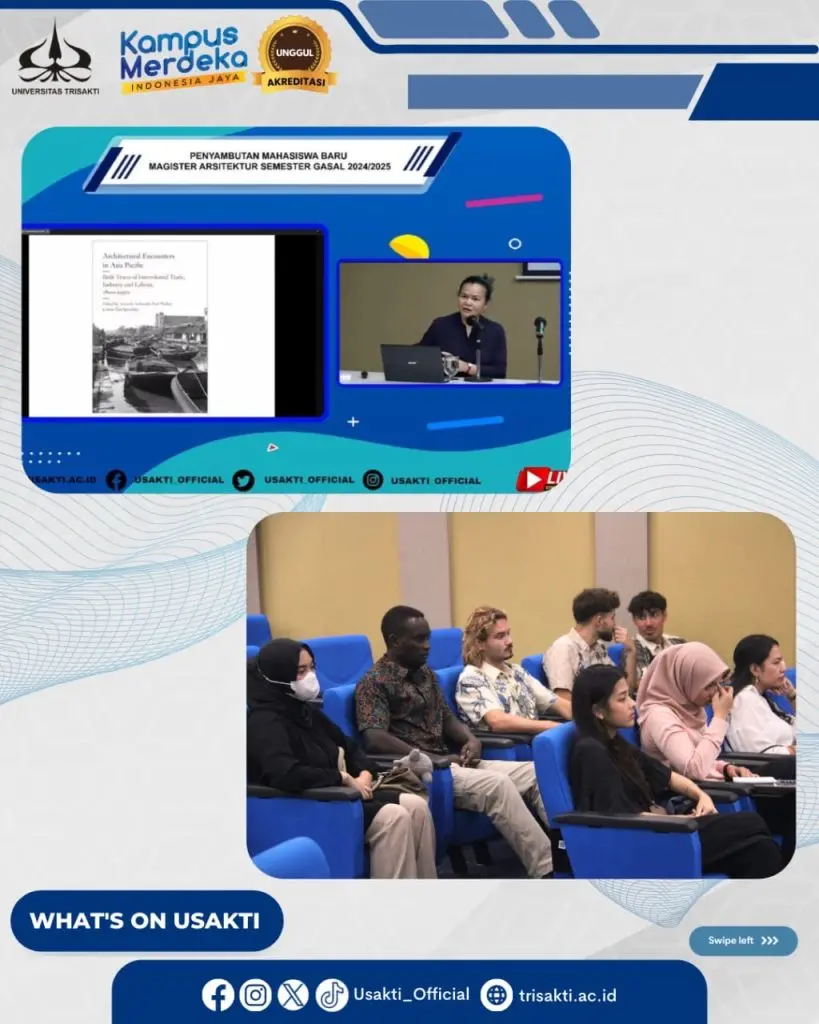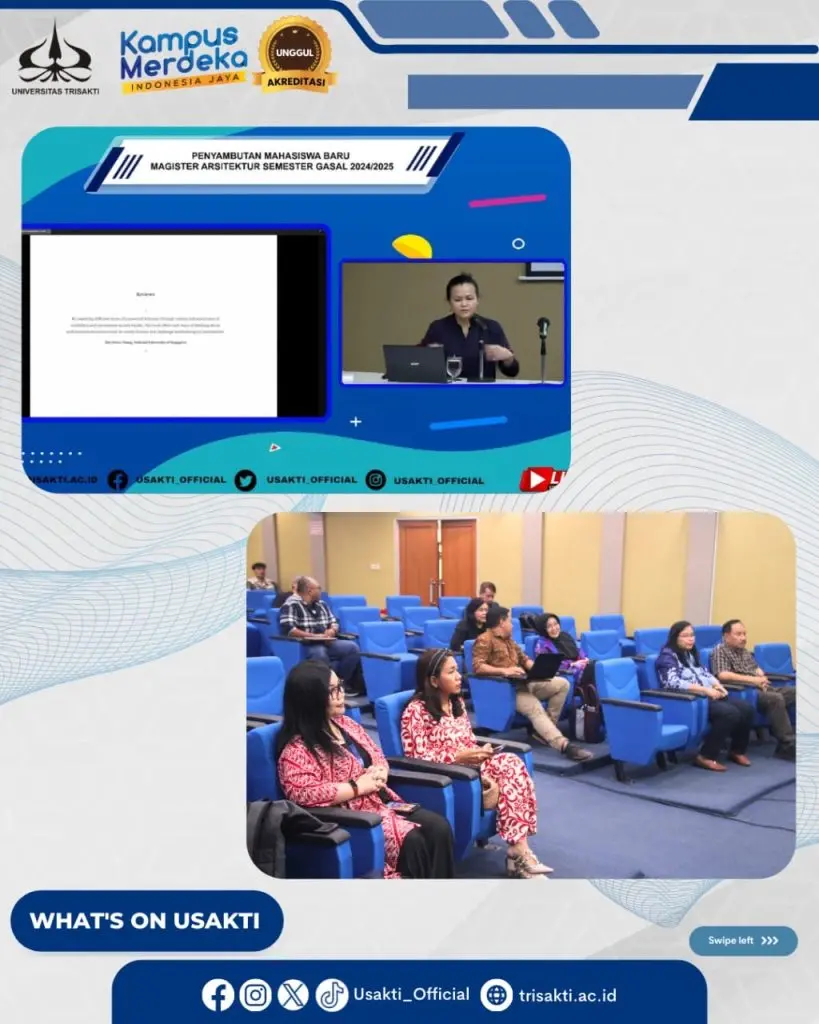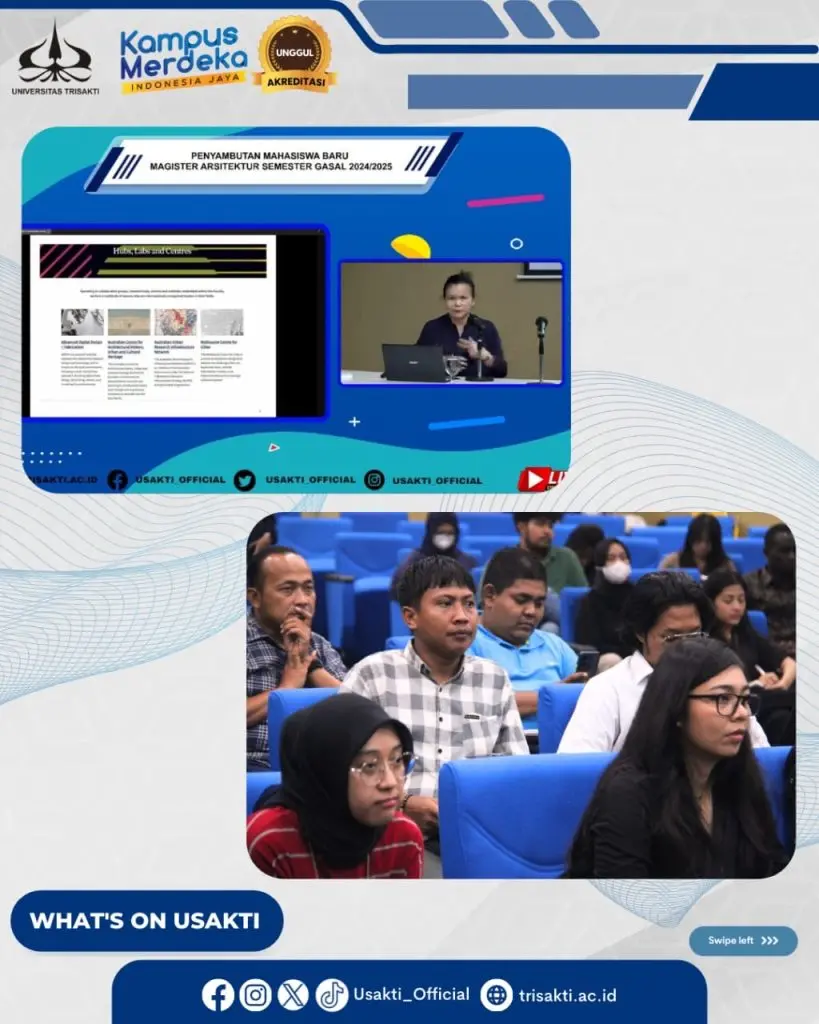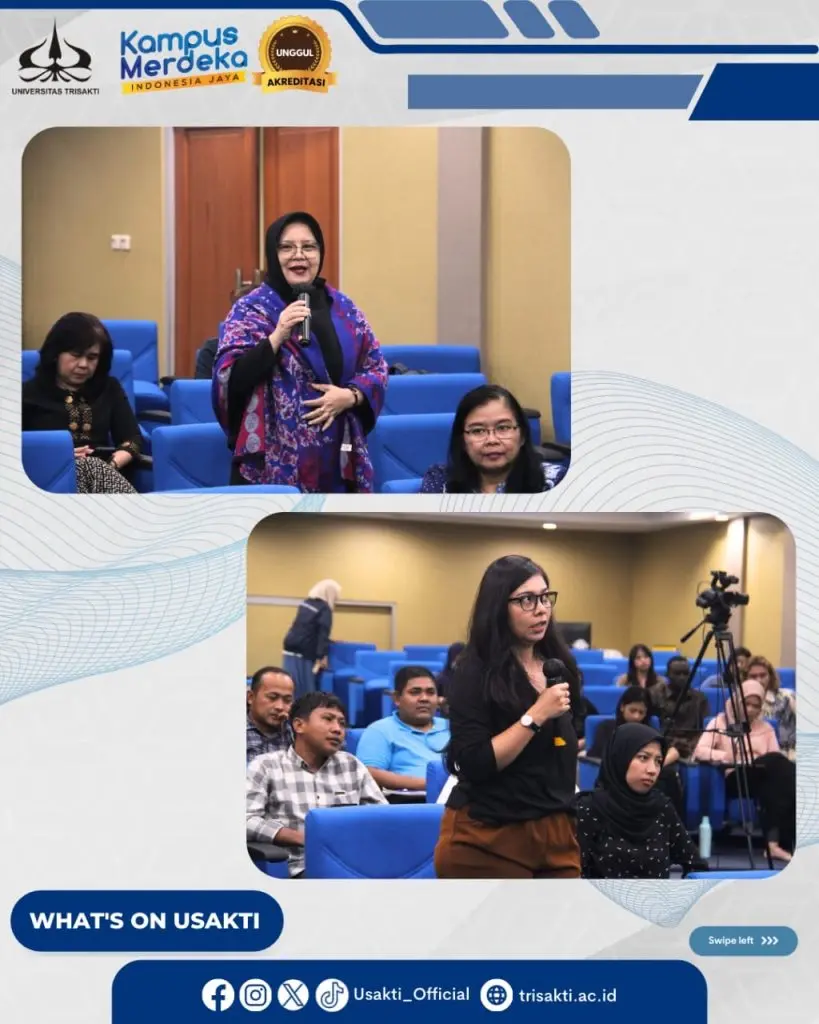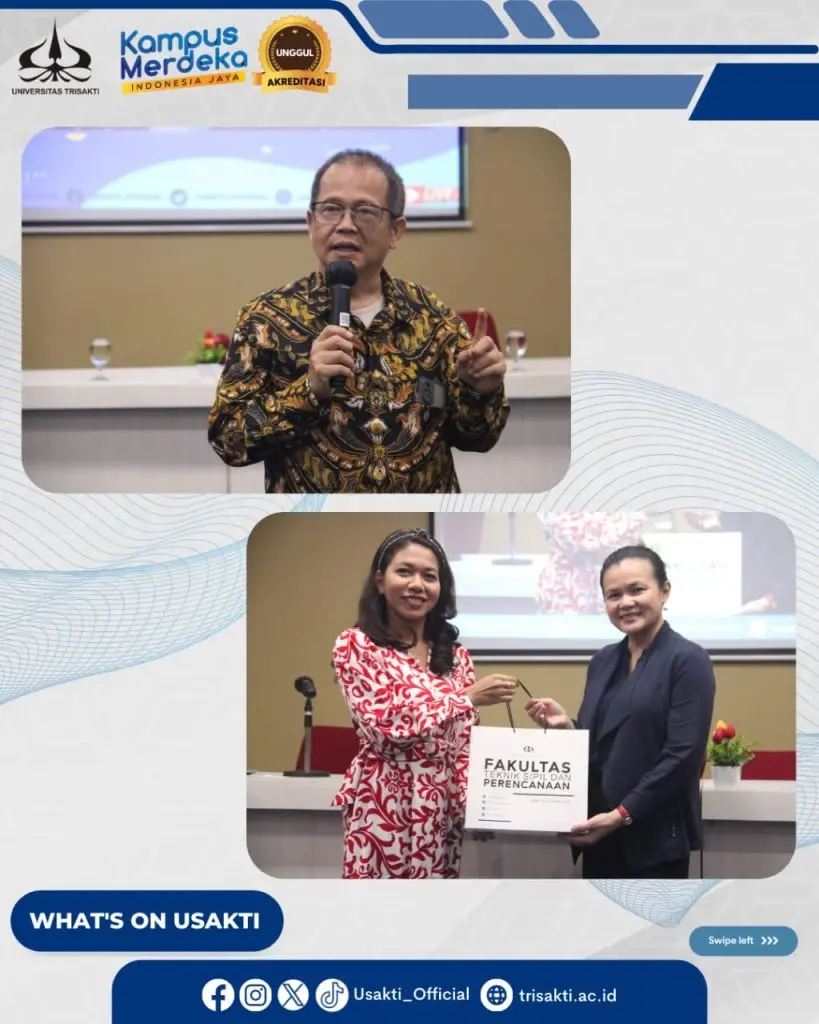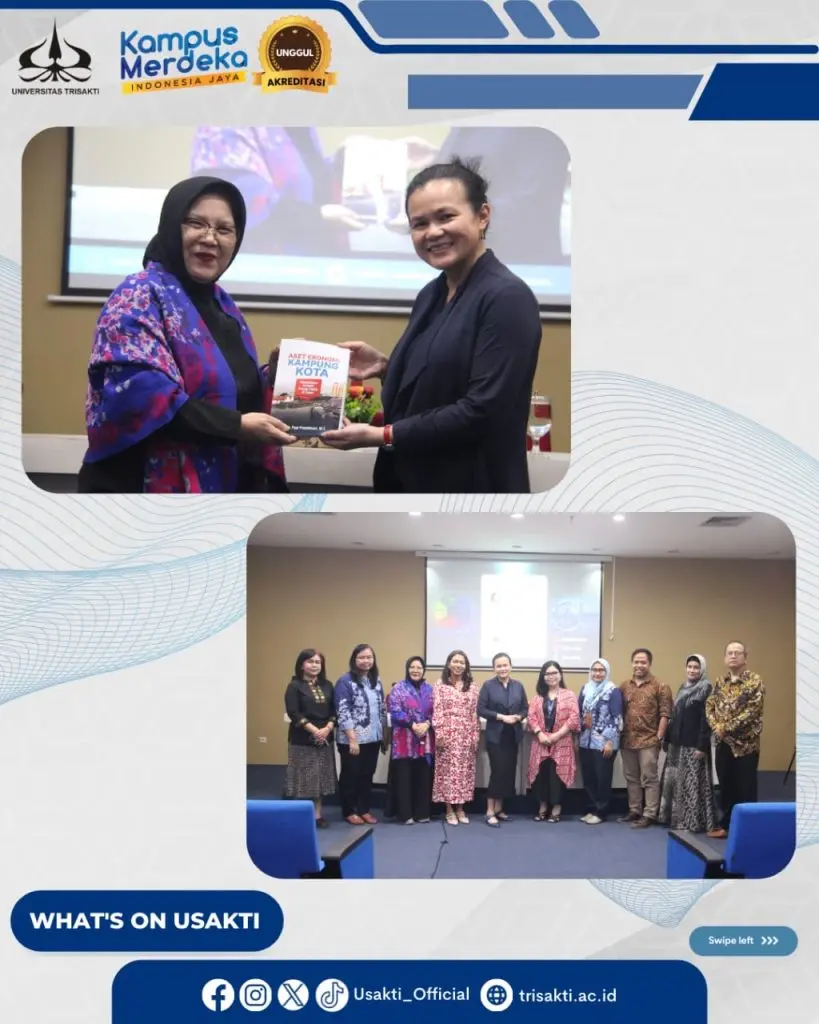Contact Us
- JL. Kyai Tapa No. 1 Grogol
- Jakarta Barat, Indonesia
- Phone:
- (62-21) 566 3232
- Whatsapp:
- (+62) 882 194 856 74
- (+62) 877 707 077 03
- Fax: (62-21) 564 4270
- Email: humas@trisakti.ac.id
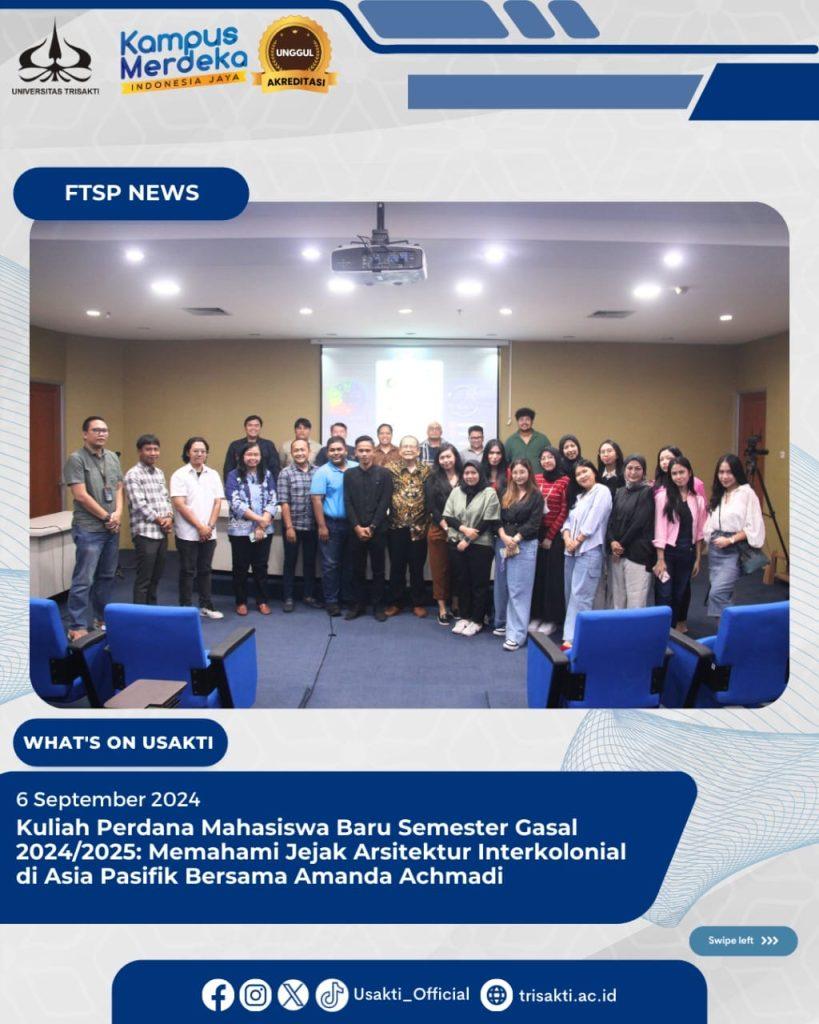
Jakarta, September 6, 2024 — The Master’s Program in Architecture and Civil Engineering held its inaugural lecture for new students for the 2024/2025 fall semester, themed “Architectural Encounters in Asia Pacific: Built Traces of Intercolonial Trade, Industry, and Labour (1800s–1950s).” This lecture was presented by Amanda Achmadi, Associate Professor in Architectural Design from the Faculty of Architecture, Building, and Planning at the University of Melbourne. The lecture, held in the Main Auditorium, was enthusiastically attended by new students, faculty members, and invited guests.
Amanda Achmadi’s presentation, titled “Architectural Encounters in Asia Pacific: Built Traces of Intercolonial Trade, Industry, and Labour (1800s–1950s),” explored the significant impact of intercolonial trade, industry, and labor on the development of architecture in the Asia-Pacific region from the 19th century to the mid-20th century. Colonialism fostered cultural and technological exchanges between colonial territories, resulting in buildings with unique characteristics. These structures not only functioned as physical elements but also symbolized the social, economic, and cultural relationships that developed under colonial dominance.
As an expert in architectural design, Amanda Achmadi highlighted how architecture within the colonial context reflected the movement and integration of cultural, political, and economic elements. For instance, industrial or commercial buildings along the coasts of the Asia-Pacific region mirrored the social changes brought about by worker migration and trade flows. Achmadi also emphasized the importance of understanding this heritage as a reflection of global dynamics during the colonial period.
The influence of intercolonial trade brought significant changes to the urban structures of many cities in the Asia-Pacific region. Beyond being economic centers, these buildings became symbols of colonial dominance and the complex intercultural interactions that ensued. Understanding colonial architecture in the Asia-Pacific provides insight into how economic, social, and political forces shaped the architectural landscape, elements of which remain visible today.
This event was also part of the welcoming activities for new students of the Master’s Programs in Architecture and Civil Engineering. It aimed to provide insights and inspiration on the development of architectural and civil engineering knowledge from a global perspective. The inaugural lecture is expected to spark students’ interest in further exploring cross-cultural architecture and history as part of their academic studies.
By featuring a speaker from a prestigious university like Amanda Achmadi, it is hoped that the new students will be inspired to develop research that contributes to both the academic and professional fields of architecture and civil engineering in the future.
